Dexmedetomidine - Commonly Used in Functional Imaging Studies - Increases Susceptibility to Seizures in Rats But Not in Wild Type Mice
- PMID: 33192234
- PMCID: PMC7658317
- DOI: 10.3389/fnins.2020.00832
Dexmedetomidine - Commonly Used in Functional Imaging Studies - Increases Susceptibility to Seizures in Rats But Not in Wild Type Mice
Abstract
Functional MRI (fMRI) utilizes changes in metabolic and hemodynamic signals to indirectly infer the underlying local changes in neuronal activity. To investigate the mechanisms of fMRI responses, spontaneous fluctuations, and functional connectivity in the resting-state, it is important to pursue fMRI in animal models. Animal studies commonly use dexmedetomidine sedation. It has been demonstrated that potent sensory stimuli administered under dexmedetomidine are prone to inducing seizures in Sprague-Dawley (SD) rats. Here we combined optical imaging of intrinsic signals and cerebral blood flow with neurophysiological recordings to measure responses in rat area S1FL to electrical forepaw stimulation administered at 8 Hz. We show that the increased susceptibility to seizures starts no later than 1 h and ends no sooner than 3 h after initiating a continuous administration of dexmedetomidine. By administering different combinations of anesthetic and sedative agents, we demonstrate that dexmedetomidine is the sole agent necessary for the increased susceptibility to seizures. The increased susceptibility to seizures prevails under a combination of 0.3-0.5% isoflurane and dexmedetomidine anesthesia. The blood-oxygenation and cerebral blood flow responses to seizures induced by forepaw stimulation have a higher amplitude and a larger spatial extent relative to physiological responses to the same stimuli. The epileptic activity and the associated blood oxygenation and cerebral blood flow responses stretched beyond the stimulation period. We observed seizures in response to forepaw stimulation with 1-2 mA pulses administered at 8 Hz. In contrast, responses to stimuli administered at 4 Hz were seizure-free. We demonstrate that such seizures are generated not only in SD rats but also in Long-Evans rats, but not in C57BL6 mice stimulated with similar potent stimuli under dexmedetomidine sedation. We conclude that high-amplitude hemodynamic functional imaging responses evoked by peripheral stimulation in rats sedated with dexmedetomidine are possibly due to the induction of epileptic activity. Therefore, caution should be practiced in experiments that combine the administration of potent stimuli with dexmedetomidine sedation. We propose stimulation paradigms that elicit seizure-free, well detectable neurophysiological and hemodynamic responses in rats. We further conclude that the increased susceptibility to seizures under dexmedetomidine sedation is species dependent.
Keywords: blood oxygenation level-dependent functional MRI; cerebral blood flow; dexmedetomidine; forepaw electrical stimulation; hemodynamic response; medetomidine; neurovascular coupling; seizures.
Copyright © 2020 Bortel, Pilgram, Yao and Shmuel.
Figures
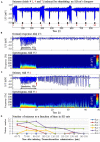
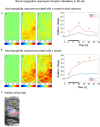
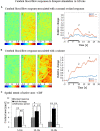
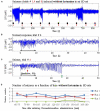
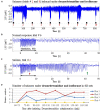

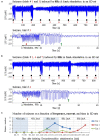

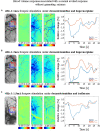

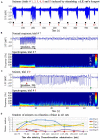
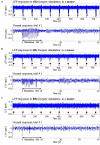
Similar articles
-
A rat model of somatosensory-evoked reflex seizures induced by peripheral stimulation.Epilepsy Res. 2019 Nov;157:106209. doi: 10.1016/j.eplepsyres.2019.106209. Epub 2019 Sep 21. Epilepsy Res. 2019. PMID: 31629247
-
Effects of the α₂-adrenergic receptor agonist dexmedetomidine on neural, vascular and BOLD fMRI responses in the somatosensory cortex.Eur J Neurosci. 2013 Jan;37(1):80-95. doi: 10.1111/ejn.12024. Epub 2012 Oct 29. Eur J Neurosci. 2013. PMID: 23106361 Free PMC article.
-
An Investigation of the Impacts of Three Anesthetic Regimens on Task-Functional Magnetic Resonance Imaging and Functional Connectivity Resting-State Functional Magnetic Resonance Imaging in Sprague Dawley and Wistar Rats.Brain Connect. 2022 Feb;12(1):74-84. doi: 10.1089/brain.2020.0875. Epub 2021 Jun 15. Brain Connect. 2022. PMID: 33947271
-
Time-dependent effects of isoflurane and dexmedetomidine on functional connectivity, spectral characteristics, and spatial distribution of spontaneous BOLD fluctuations.NMR Biomed. 2014 Mar;27(3):291-303. doi: 10.1002/nbm.3062. Epub 2014 Jan 21. NMR Biomed. 2014. PMID: 24449532 Free PMC article.
-
Mouse fMRI under ketamine and xylazine anesthesia: Robust contralateral somatosensory cortex activation in response to forepaw stimulation.Neuroimage. 2018 Aug 15;177:30-44. doi: 10.1016/j.neuroimage.2018.04.062. Epub 2018 May 4. Neuroimage. 2018. PMID: 29730495
Cited by
-
The nonhuman primate neuroimaging and neuroanatomy project.Neuroimage. 2021 Apr 1;229:117726. doi: 10.1016/j.neuroimage.2021.117726. Epub 2021 Jan 20. Neuroimage. 2021. PMID: 33484849 Free PMC article. Review.
-
Optical Imaging-Based Guidance of Viral Microinjections and Insertion of a Laminar Electrophysiology Probe Into a Predetermined Barrel in Mouse Area S1BF.Front Neural Circuits. 2021 May 13;15:541676. doi: 10.3389/fncir.2021.541676. eCollection 2021. Front Neural Circuits. 2021. PMID: 34054436 Free PMC article.
-
Hemodynamic responses in the rat hippocampus are simultaneously controlled by at least two independently acting neurovascular coupling mechanisms.J Cereb Blood Flow Metab. 2024 Jun;44(6):896-910. doi: 10.1177/0271678X231221039. Epub 2023 Dec 12. J Cereb Blood Flow Metab. 2024. PMID: 38087890 Free PMC article.
-
Effects of Anesthesia on Cerebral Blood Flow and Functional Connectivity of Nonhuman Primates.Vet Sci. 2022 Sep 22;9(10):516. doi: 10.3390/vetsci9100516. Vet Sci. 2022. PMID: 36288129 Free PMC article. Review.
-
Multimodal Optical Imaging to Investigate Spatiotemporal Changes in Cerebrovascular Function in AUDA Treatment of Acute Ischemic Stroke.Front Cell Neurosci. 2021 Jun 3;15:655305. doi: 10.3389/fncel.2021.655305. eCollection 2021. Front Cell Neurosci. 2021. PMID: 34149359 Free PMC article.
References
-
- Airaksinen A. M., Niskanen J. P., Chamberlain R., Huttunen J. K., Nissinen J., Garwood M., et al. (2010). Simultaneous fMRI and local field potential measurements during epileptic seizures in medetomidine-sedated rats using raser pulse sequence. Magn. Reson. Med. 64 1191–1199. 10.1002/mrm.22508 - DOI - PMC - PubMed
LinkOut - more resources
Full Text Sources

